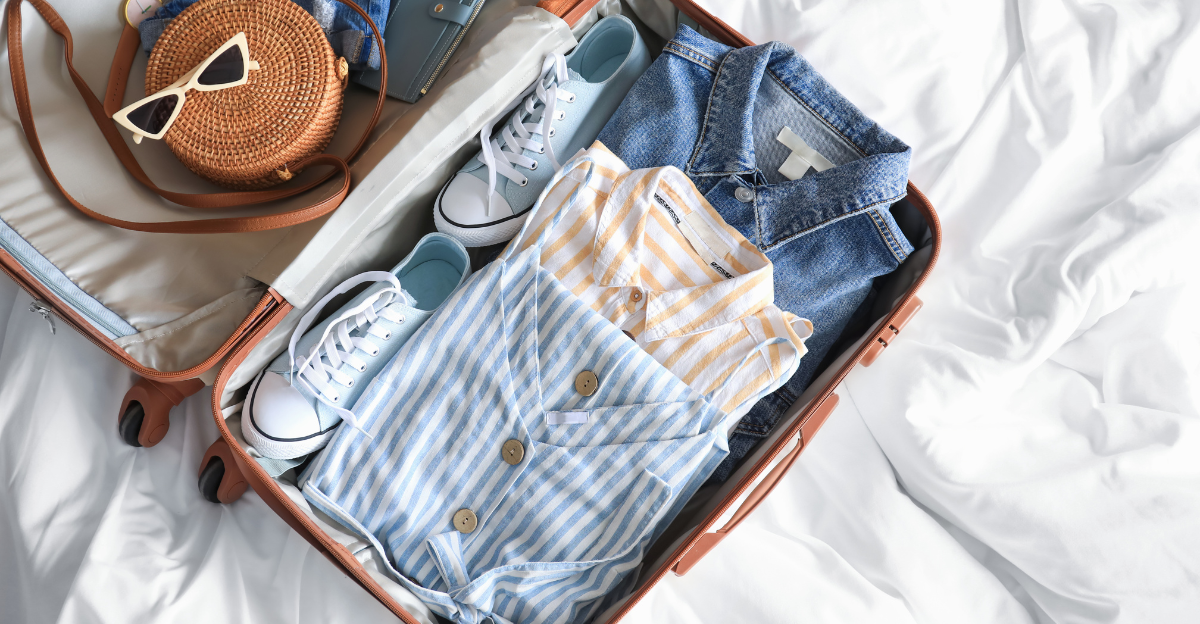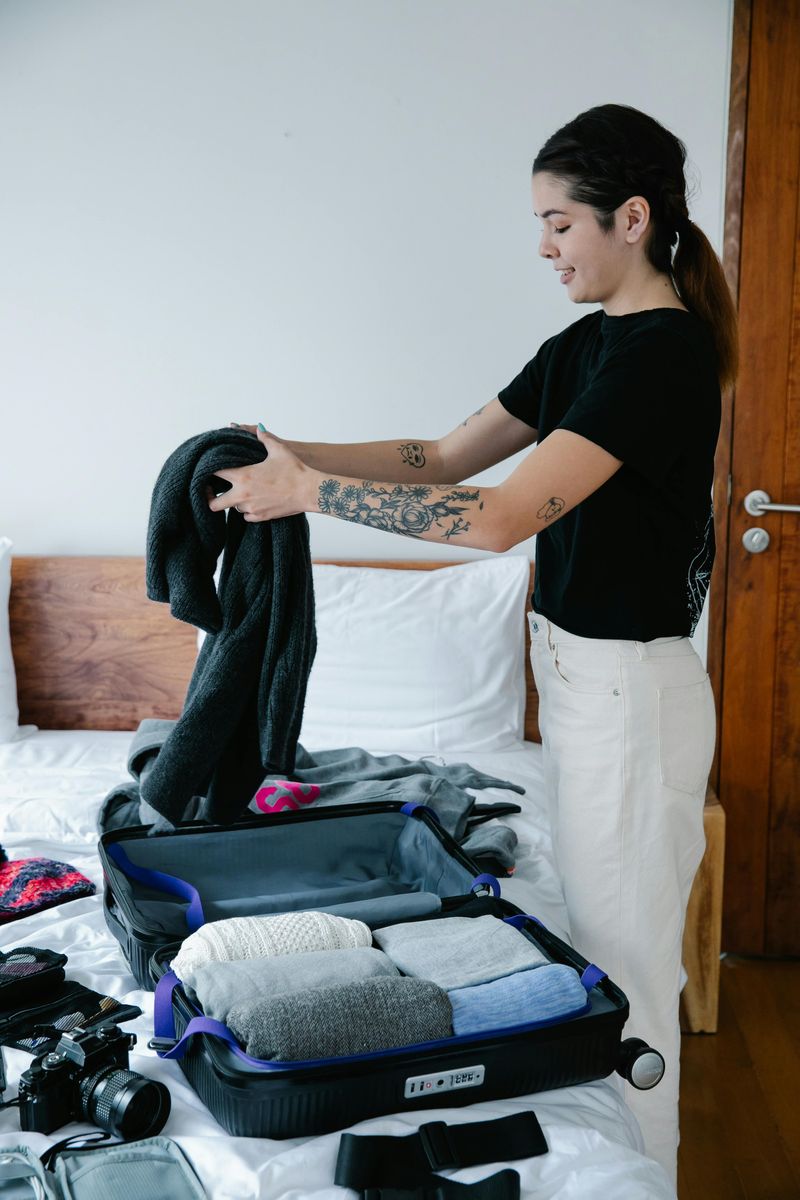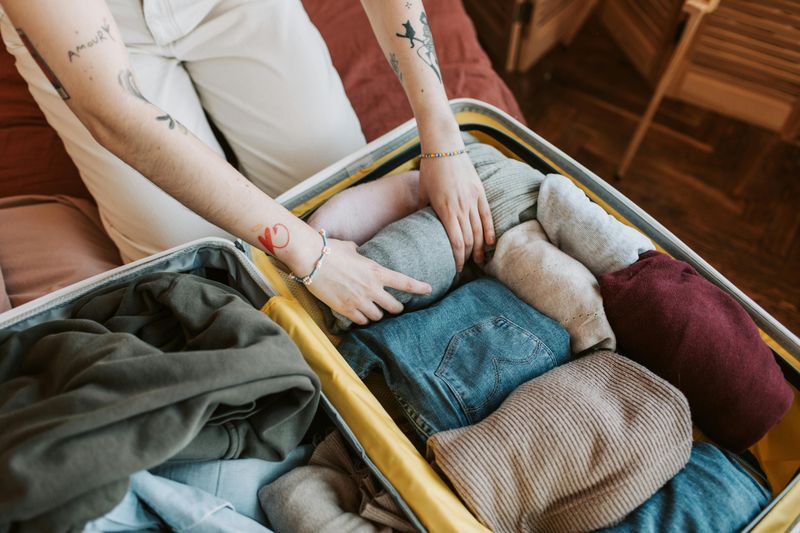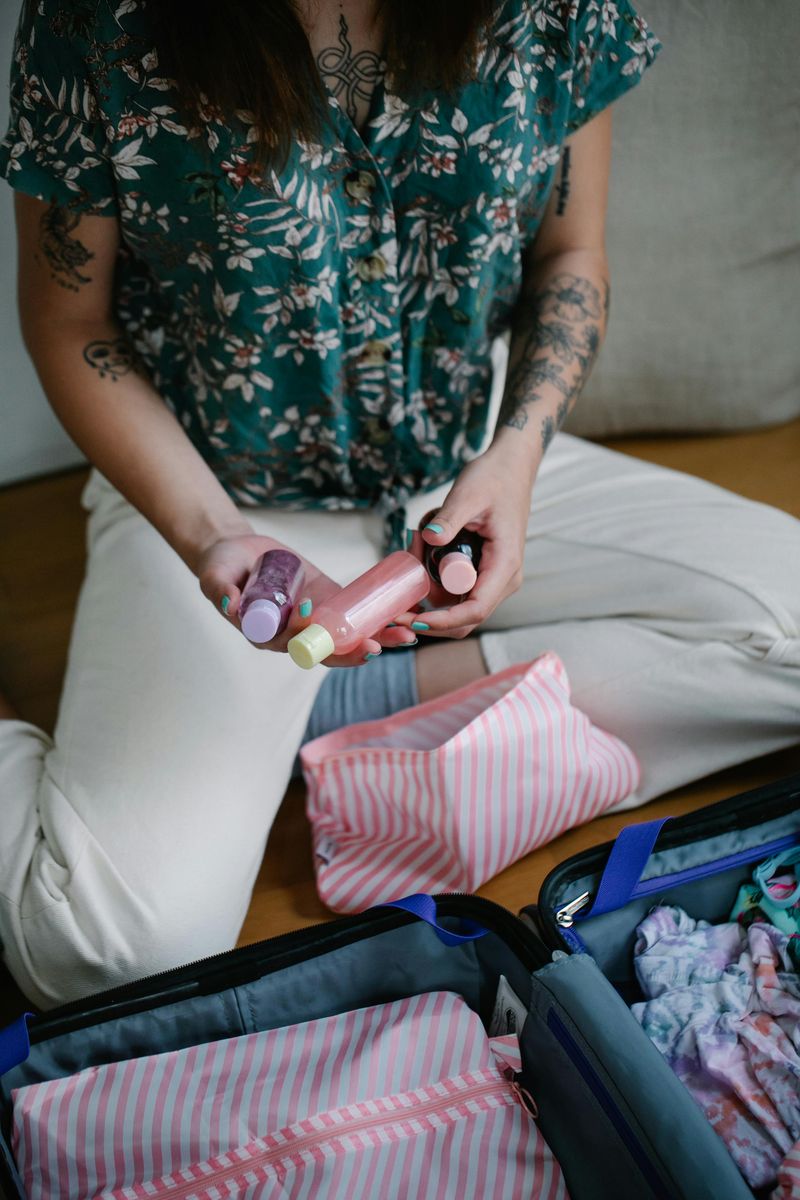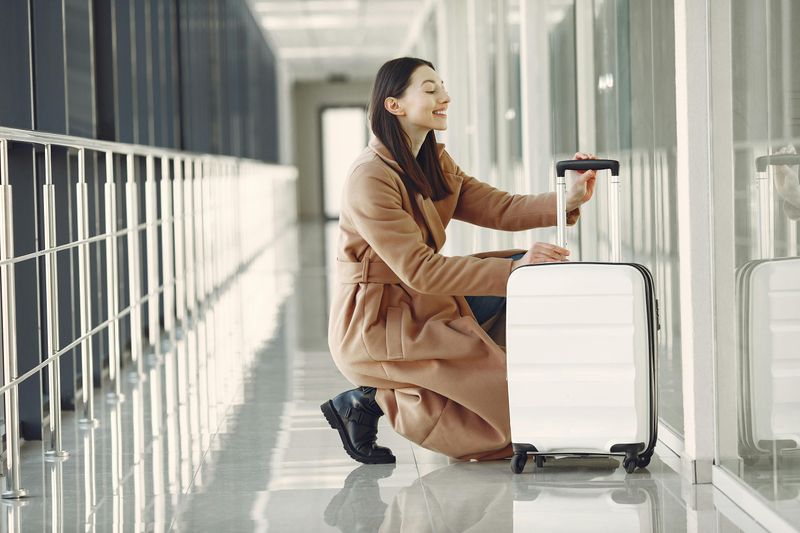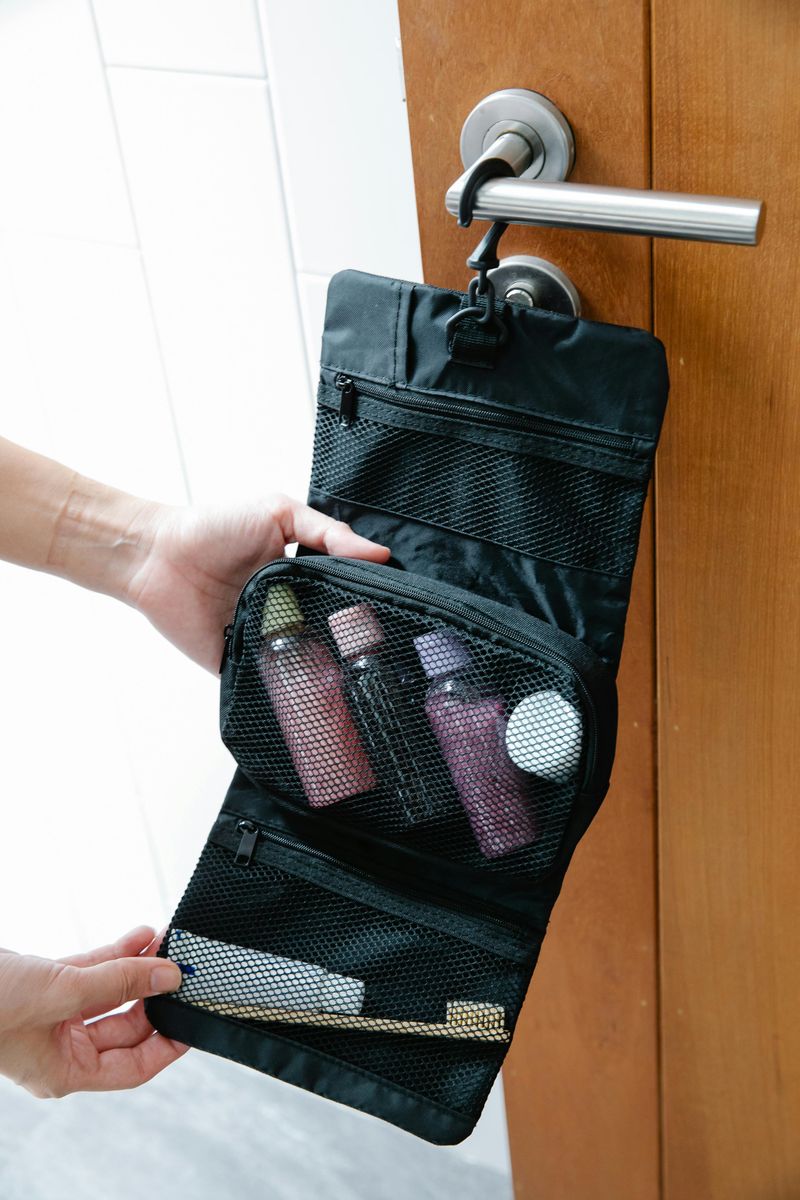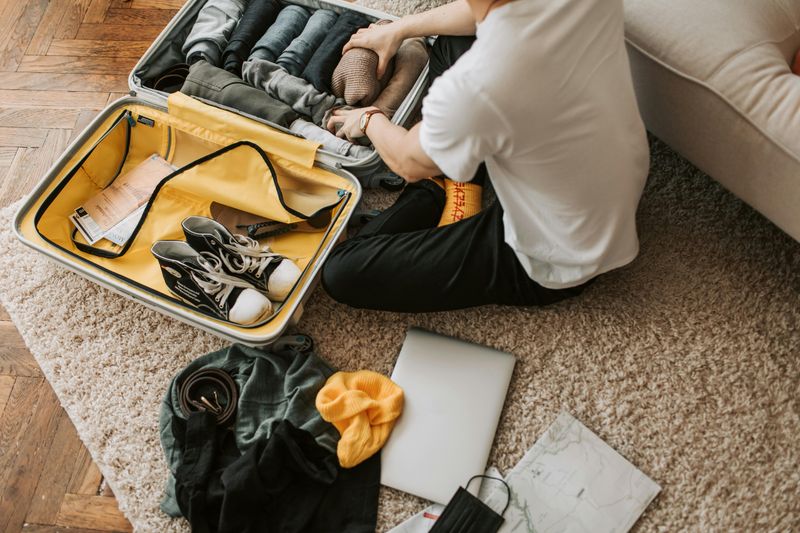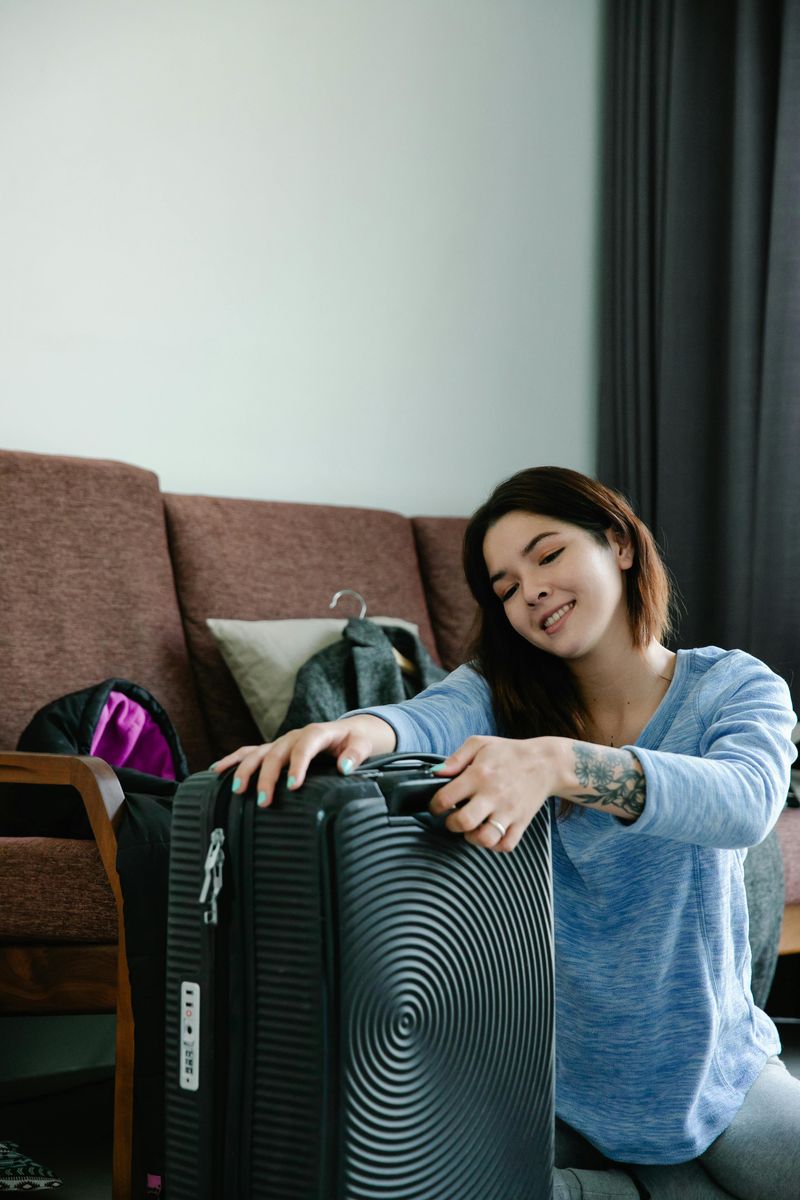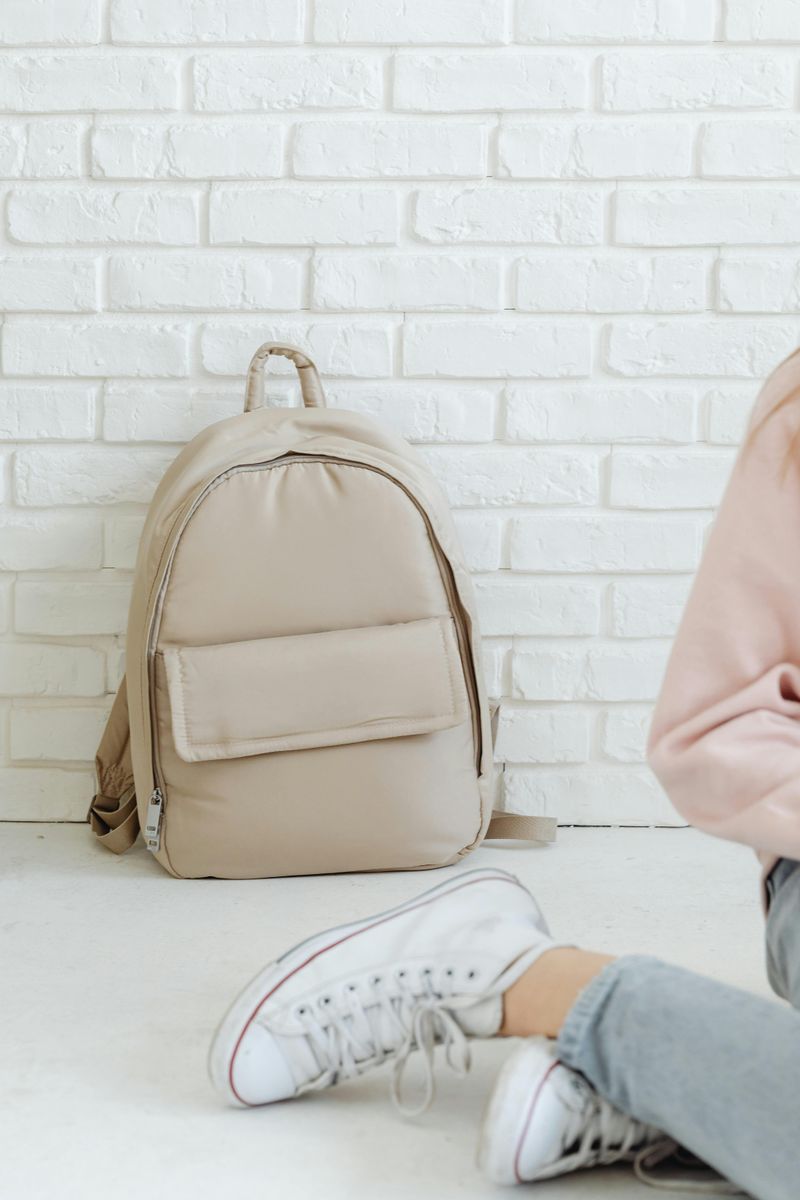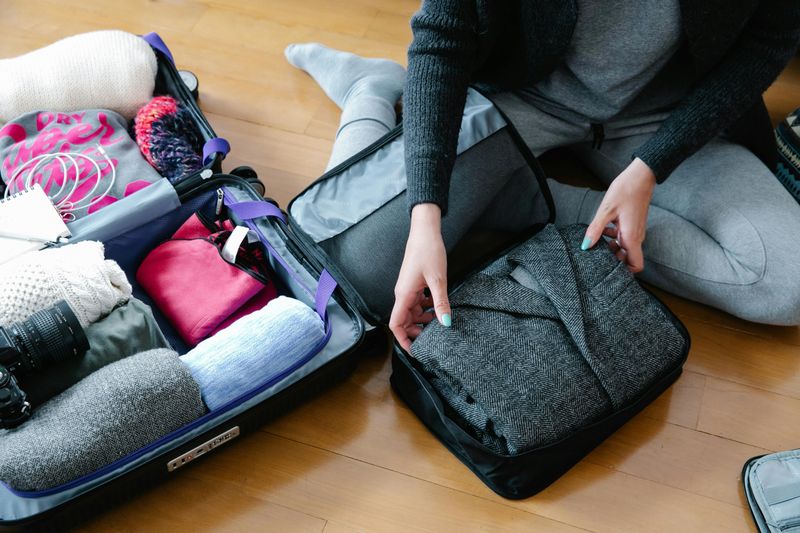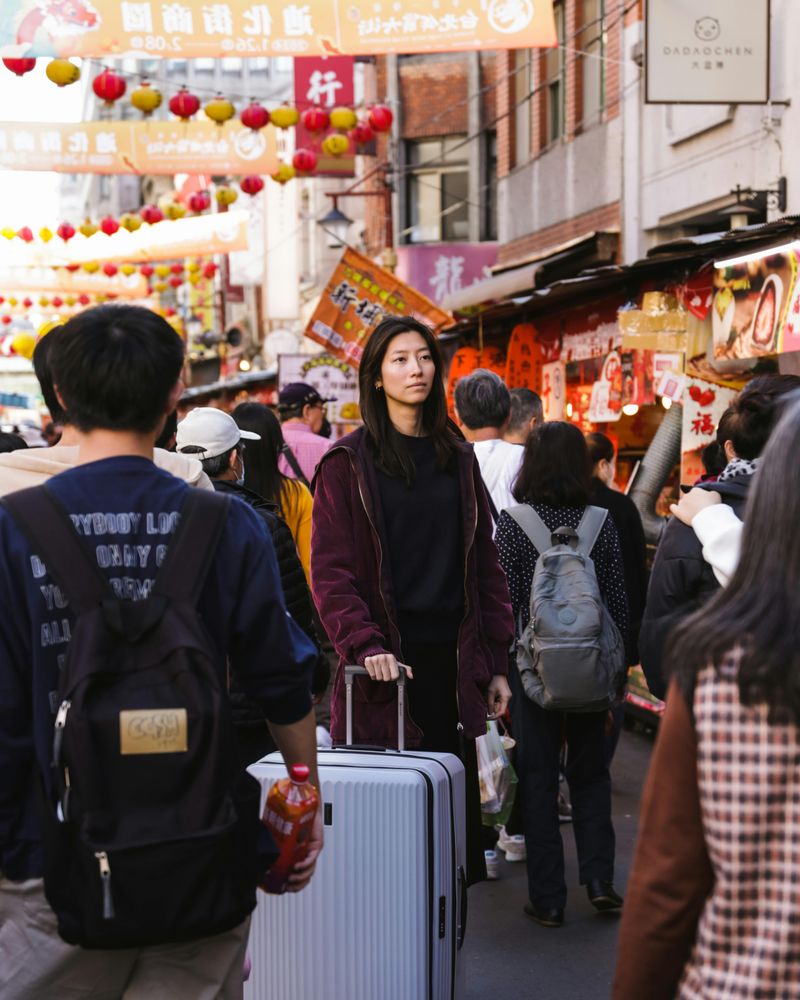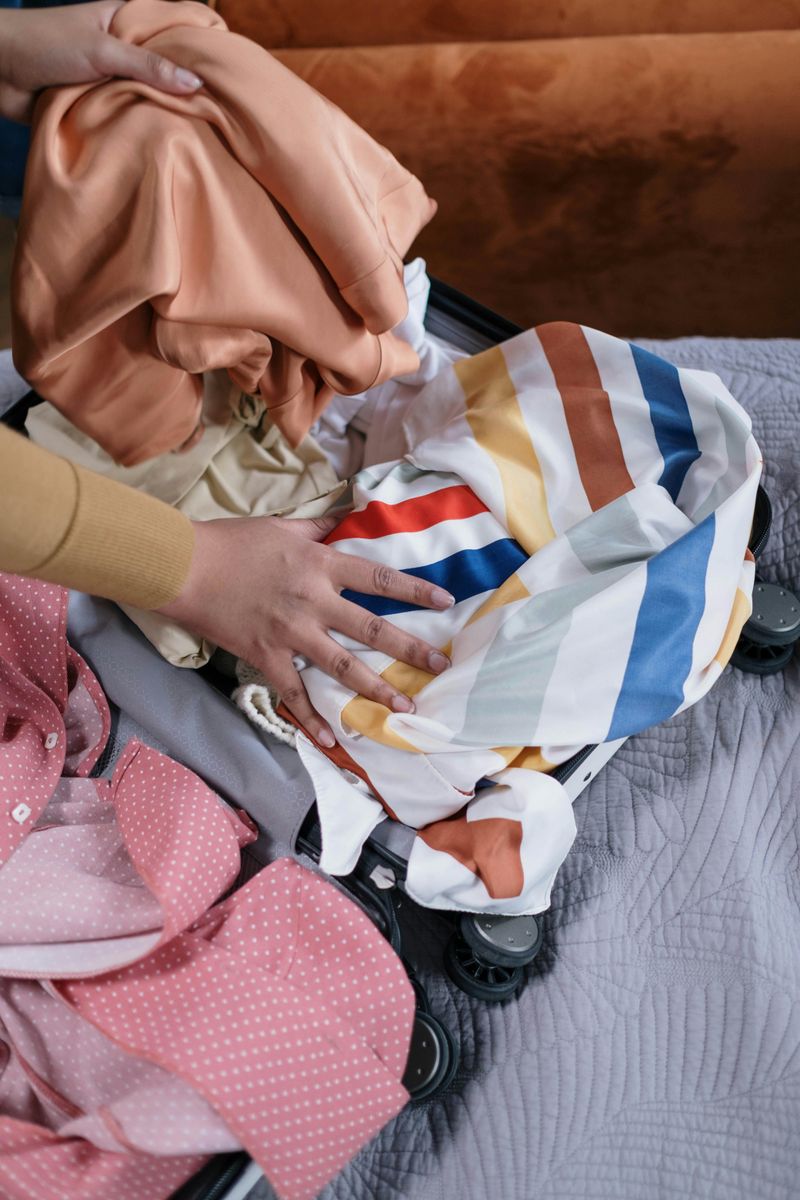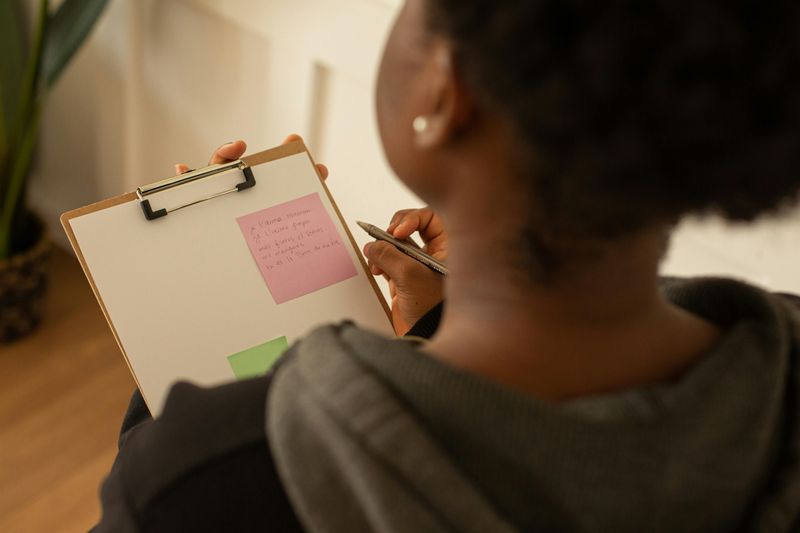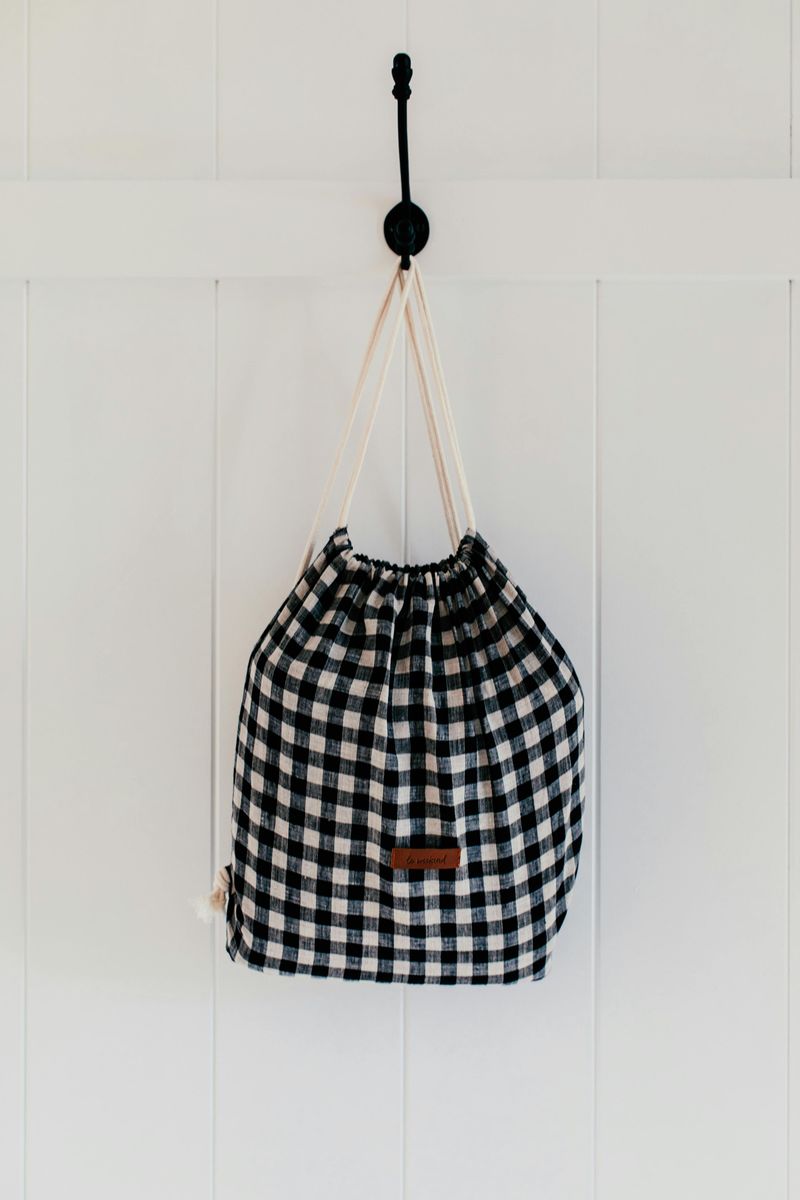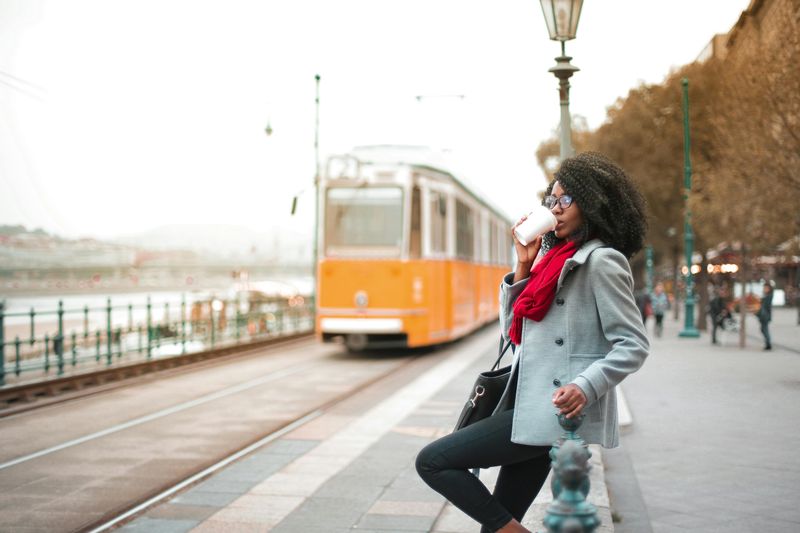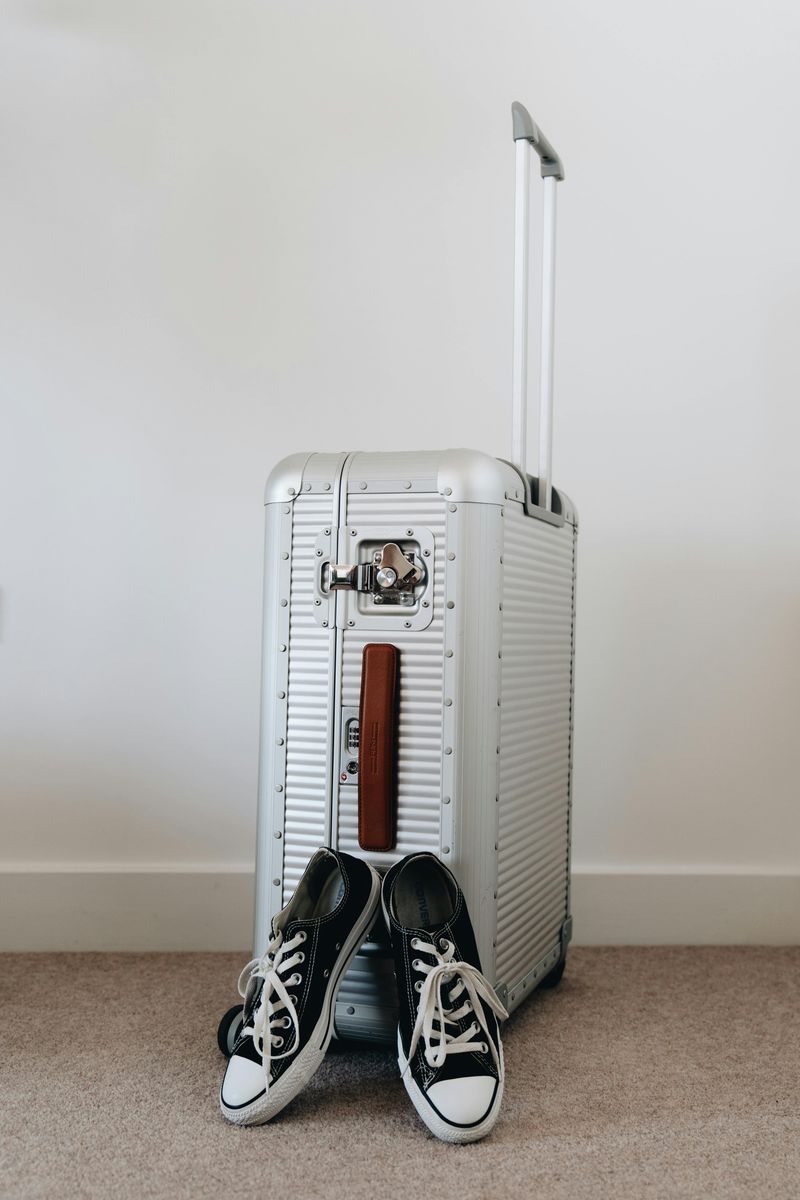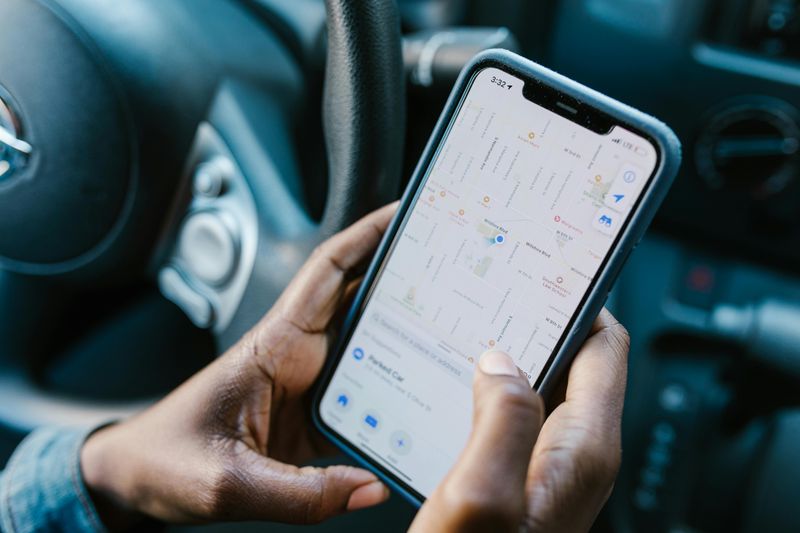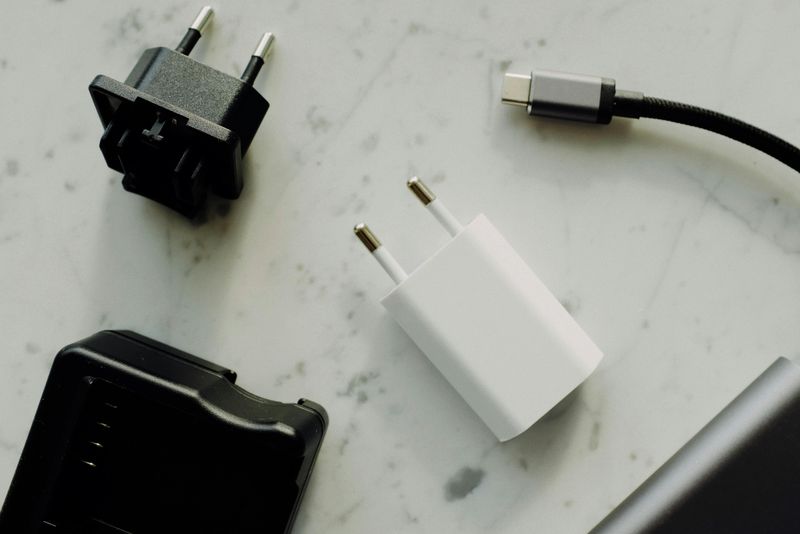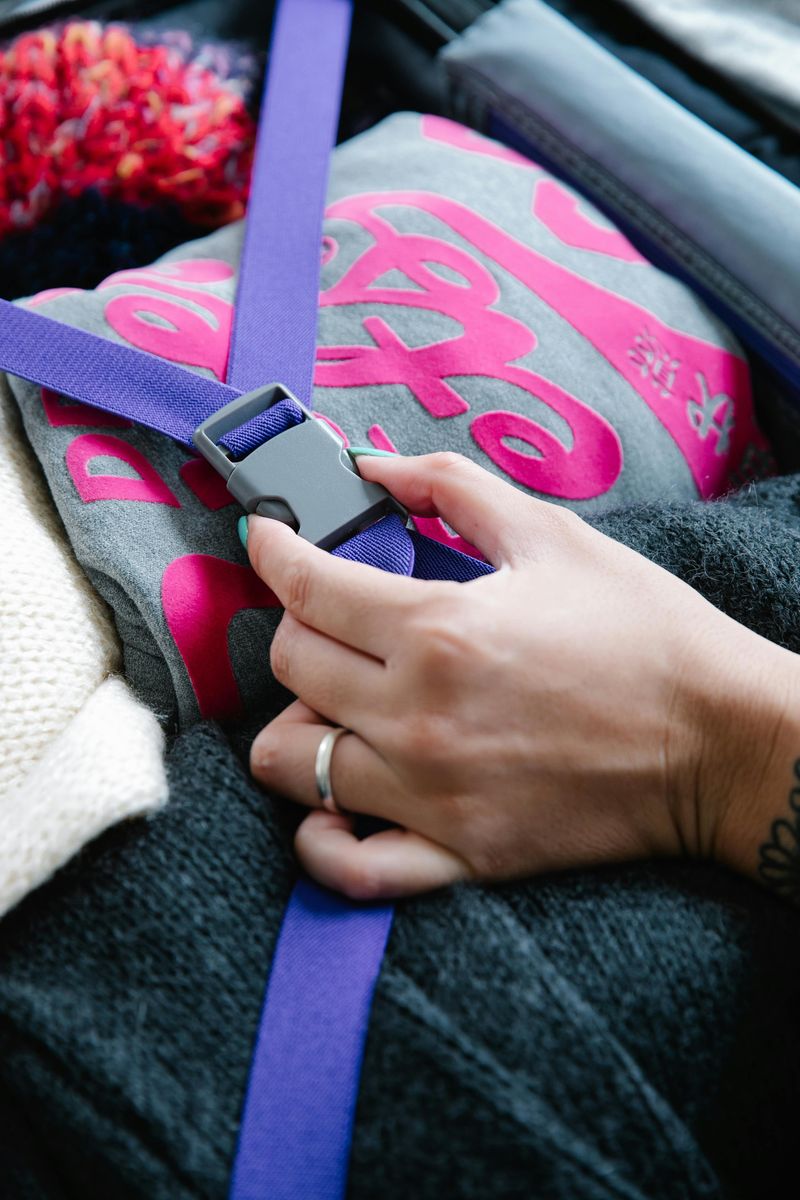Imagine breezing through the airport while others wait at baggage claim. That freedom is what carry-on-only travel offers, and it’s easier than you think. Frequent travelers have mastered the art of packing light without sacrificing comfort or style, and they’re ready to share their best-kept secrets with you.
1. Build a Capsule Wardrobe
Smart travelers know the magic formula: fewer clothes, more outfits. A capsule wardrobe means picking versatile pieces that all work together, like neutral-colored tops, bottoms, and layers that can be mixed and matched endlessly.
Think of it as building blocks for your trip. One pair of black pants can pair with five different shirts, creating five unique looks without stuffing your bag.
Choose fabrics that resist wrinkles and can be worn multiple times between washes. This strategy cuts your packing list in half while keeping you stylish throughout your journey.
2. Master the Art of Rolling
Folding is old news. Rolling your clothes tightly into compact cylinders saves incredible amounts of space and reduces wrinkles at the same time.
Start with heavier items like jeans and work your way to lighter fabrics. Roll each piece as tightly as possible, squeezing out excess air as you go.
Some experts prefer bundle wrapping, where you wrap clothes around a central core object. Both methods work wonders, but rolling is easier for beginners. Your suitcase will thank you when you fit twice as much in half the space.
3. Invest in Compression Packing Cubes
These zippered fabric containers are game-changers for carry-on travelers. Compression packing cubes organize your belongings while squishing them down to a fraction of their original size.
Fill each cube with similar items, then zip the compression zipper to squeeze out air. Your clothes stay wrinkle-free and organized by category, making it easy to find what you need.
Many travelers swear they can pack for two weeks in a carry-on using these cubes. They come in different sizes and colors, so you can color-code your packing system for maximum efficiency.
4. Wear Your Bulkiest Items on the Plane
Here’s a brilliant trick: your body becomes extra storage space. That chunky sweater, heavy jacket, or clunky boots take up precious room in your luggage, so wear them during your flight instead.
Yes, you might look a bit overdressed at the airport, but you’ll save enormous amounts of space. Once you’re on the plane, simply stash the jacket in the overhead bin or use it as a blanket.
Boots especially eat up suitcase real estate. Wearing them means more room for other essentials while keeping your feet comfortable during long airport walks.
5. Go Minimal with Liquids
Liquids are the enemy of light packing. TSA rules limit you to tiny bottles anyway, so why not embrace the minimalist approach completely?
Switch to solid alternatives wherever possible: shampoo bars, solid deodorant, toothpaste tablets, and solid perfume all work beautifully. These products last longer than you’d expect and breeze through security without a second glance.
For liquids you absolutely need, buy travel-size versions or use tiny refillable containers. Better yet, many hotels provide basic toiletries, so you might not need to pack them at all.
6. Utilize Every Pocket and Crevice
Your suitcase has secret storage spots you’re probably ignoring. Those shoes you’re packing? Perfect containers for socks, chargers, or jewelry.
Side compartments and external pockets should hold items you’ll need quick access to, like headphones or snacks. Interior mesh pockets are ideal for underwear or electronics.
Even the space around your suitcase handle can hold slim items. Experienced packers treat their luggage like a three-dimensional puzzle, finding creative spots for every single item. Nothing goes to waste when you pack with intention and awareness.
7. Pack Heavier Items at the Bottom
Physics matters when packing. Placing heavier items near the wheels creates a stable base and makes your suitcase easier to roll through terminals.
Shoes, toiletry bags, and electronics should go on the bottom layer. This prevents them from crushing delicate clothing and keeps your bag balanced as you navigate crowded airports.
Lighter items like t-shirts and undergarments belong on top. This strategic arrangement also means you won’t have to dig through your entire suitcase to reach frequently-used items at your destination.
8. Maximize Your Personal Item
Airlines allow both a carry-on and a personal item, so make that second bag count. A spacious backpack or large tote can hold surprisingly heavy gear without cutting into your suitcase space.
Load your personal item with your laptop, camera, books, snacks, and even an extra pair of shoes. These heavier objects won’t weigh you down when worn on your back or shoulder.
Keep essentials like medications, chargers, and important documents in this bag too. You’ll have everything you need within arm’s reach during the flight.
9. Ditch the Just-in-Case Items
That fancy dress for an event that probably won’t happen? Leave it home. Extra pairs of shoes for outfits you might not wear? Not worth the space.
Most people pack for imaginary scenarios that never materialize. Challenge yourself by questioning every item: Will I definitely use this, or am I packing it just in case?
Remember, you can buy forgotten items at your destination if truly needed. Stores exist everywhere, and part of traveling light means trusting you’ll figure things out. Embrace the freedom of packing only what you know you’ll actually use.
10. Choose Multi-Purpose Gear
Why pack three items when one can do three jobs? Multi-purpose gear is the frequent traveler’s secret weapon for staying light.
A sarong works as a beach cover-up, picnic blanket, or emergency curtain. A buff can be a headband, face mask, or scarf. Convertible pants zip off into shorts, giving you two outfits in one.
Even your smartphone replaces multiple gadgets: camera, alarm clock, flashlight, and map. Think creatively about how each item can serve multiple functions, and you’ll cut your packing list dramatically.
11. Weigh Your Bag Before Leaving
Nothing ruins a smooth departure like discovering your carry-on exceeds weight limits at the gate. Avoid this embarrassing scenario by weighing your bag at home first.
Invest in a portable luggage scale or simply use your bathroom scale. Most airlines allow carry-ons between 15-22 pounds, but rules vary by carrier.
Knowing your bag’s exact weight gives you confidence at check-in and prevents last-minute repacking disasters. If you’re over the limit, you’ll have time to make adjustments in the comfort of your home rather than frantically at the airport.
12. Leave Space for Souvenirs
Packing your suitcase to maximum capacity sounds efficient, but it’s actually a rookie mistake. You’ll want room for treasures you find along the way.
Leave about 20 percent of your luggage empty when you depart. This buffer zone accommodates gifts, local products, or that perfect item you stumble upon while exploring.
Returning home with a stuffed suitcase feels satisfying, and you won’t stress about fitting everything in. Smart travelers plan for growth, knowing their bags will naturally fill up during the adventure ahead.
13. Embrace Quick-Dry Fabrics
Synthetic fabrics designed for hiking and athletics are perfect for travel. Materials like polyester, nylon, and merino wool dry incredibly fast after washing, meaning you can pack fewer clothes overall.
Wash a shirt in your hotel sink at night, and it’s ready to wear by morning. This superpower lets you recycle outfits throughout your trip without smelling like a gym locker.
Quick-dry fabrics also resist wrinkles better than cotton and often have moisture-wicking properties. They might cost more upfront, but serious travelers consider them essential investments for carry-on-only adventures.
14. Digitize Your Entertainment
Books are wonderful, but they’re also heavy space-hogs. Download ebooks, audiobooks, movies, and music to your devices instead of packing physical entertainment.
A single tablet can hold hundreds of books, dozens of movies, and endless music without adding any weight to your bag. Most airlines and hotels offer WiFi, making it easy to access streaming services too.
Don’t forget to download content before your trip for offline access. Long flights pass quickly when you’re absorbed in a good story, and your back will appreciate not lugging around heavy paperbacks.
15. Master the Outfit Repeat
Here’s a freeing truth: strangers don’t notice or care if you wear the same outfit twice. Frequent travelers embrace outfit repetition without shame.
Change up your look with different accessories, layering pieces, or styling tricks. That same black dress works for sightseeing with sneakers or dinner with heels and a scarf.
Letting go of the need for daily wardrobe variety is incredibly liberating. You’ll pack less, stress less, and spend less time deciding what to wear. Focus your energy on experiences instead of outfits nobody will remember anyway.
16. Use Packing Checklists
Even experienced travelers forget things occasionally. A reliable packing checklist prevents those frustrating moments when you realize you left something essential at home.
Create a master list on your phone or computer that you can reference for every trip. Customize it based on destination, weather, and trip length.
Checking off items as you pack gives you confidence that nothing important got left behind. Over time, you’ll refine your list to perfection, knowing exactly what you need and nothing more. This system eliminates overpacking born from anxiety about forgetting something.
17. Coordinate Your Color Palette
Sticking to two or three complementary colors transforms your limited wardrobe into countless outfit combinations. Navy, white, and khaki all pair beautifully together, for example.
When everything matches everything else, you can’t create a bad outfit. This strategy maximizes versatility while minimizing the number of pieces you need to pack.
Avoid bringing that one bright shirt that only works with specific pants. Every item should coordinate with at least three other pieces in your bag. Disciplined color coordination is how minimalist packers look put-together with remarkably few clothes.
18. Pack a Lightweight Day Bag
Once you reach your destination, you’ll need something to carry daily essentials while exploring. A packable daypack solves this problem without taking up precious luggage space.
These clever bags fold or stuff into their own pocket, becoming roughly the size of a tennis ball. When needed, they expand into full-sized backpacks perfect for carrying water, snacks, cameras, and souvenirs.
Look for lightweight nylon versions that weigh just a few ounces. Many travelers keep one permanently in their carry-on, ready for adventure at a moment’s notice.
19. Wear Layers Instead of Bulky Jackets
One thick coat takes up enormous space, but several thin layers pack flat and provide better temperature control. This is the outdoor enthusiast’s secret that travelers have adopted.
Start with a moisture-wicking base layer, add a fleece or light sweater for warmth, and top with a windproof or waterproof shell. Each layer rolls up small and serves multiple purposes.
You can adjust your comfort level throughout the day by adding or removing layers. This flexible system works for varying weather conditions without requiring different jackets for different scenarios.
20. Choose Shoes Wisely
Shoes are the biggest space-wasters in any suitcase. Limit yourself to three pairs maximum: the ones you’re wearing, plus two in your bag.
Choose comfortable walking shoes as your primary pair, something you can wear all day without blisters. Add versatile slip-ons or flats that work for both casual and slightly dressy occasions.
Your third pair depends on your destination: sandals for beaches, lightweight boots for hiking, or dress shoes for business trips. Each pair must earn its space by serving multiple purposes throughout your journey.
21. Embrace Laundry on the Road
Access to laundry facilities completely changes the packing game. Washing clothes mid-trip means you can pack half as much and still have clean outfits daily.
Many accommodations offer laundry services or machines. If not, hand-washing in your sink with travel detergent works perfectly for small loads. Hang items to dry overnight using a portable clothesline or hangers.
Some travelers do laundry every three days, essentially recycling the same small wardrobe throughout long trips. This approach feels strange at first but quickly becomes liberating when you realize how little you actually need.
22. Keep Medications in Original Containers
Transferring pills into smaller containers saves space but creates potential problems at security checkpoints and customs. Keep medications in their original labeled bottles instead.
This prevents confusion about what you’re carrying and proves you have legitimate prescriptions if questioned. Many countries have strict rules about importing medications, and proper labeling protects you.
Organize bottles in a clear plastic bag for easy access during screening. Bring enough medication for your entire trip plus a few extra days in case of delays. Your health isn’t worth the risk of running out far from home.
23. Download Offline Maps
Getting lost in a foreign city without internet access is stressful and wastes precious vacation time. Download offline maps before you leave home to navigate confidently anywhere.
Apps like Google Maps allow you to save entire regions for offline use. Mark important locations like your hotel, restaurants, and attractions so you can find them without data or WiFi.
This simple preparation eliminates the need for paper maps or expensive international data plans. You’ll explore with confidence, knowing your phone can guide you back to safety even in the remotest locations.
24. Pack a Universal Adapter
Different countries use different electrical outlets, and nothing’s more frustrating than being unable to charge your devices. A universal adapter solves this problem in one small package.
Modern versions include USB ports, letting you charge multiple devices simultaneously from a single outlet. Some even have built-in surge protection to keep your electronics safe.
This single item replaces multiple country-specific adapters, saving space and hassle. Check that yours works in your destination countries before departing. A dead phone in a foreign country ranges from inconvenient to genuinely dangerous.
25. Practice Your Packing Skills
Packing efficiently is a learned skill that improves with practice. Don’t wait until the night before your trip to figure out if everything fits.
Do a trial pack a week before departure. This reveals what works, what doesn’t, and what you forgot. You’ll have time to make adjustments or buy needed items.
Each trip teaches you something new about your packing style and actual needs. Pay attention to what you never used and what you wished you’d brought. Over time, you’ll develop an intuitive sense of exactly what belongs in your carry-on and what stays home.
